
African Penguins Thrive on Cape of Good Hope
African Penguins Colony
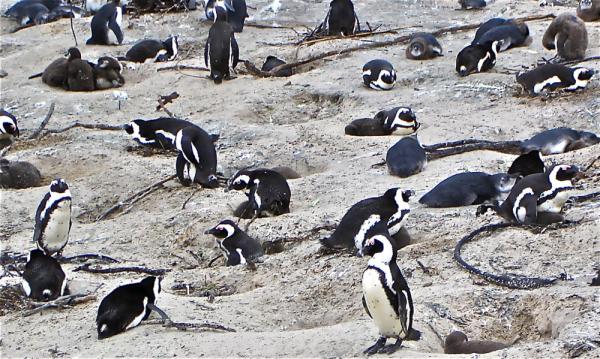
Large colonies of African Blackfoot penguins live on the rocky coastlines of southwest Africa. These unique birds of the sea can swim at speeds up to 12 mph (20 kph) and daily travel over 30 miles (50 kilometers) in search of food. By nightfall they return to their sand beach colonies and huddle together for security.
African Penguins Boulders Beach

The African penguins are found on twenty-seven sites, most of which are the inshore islands off the southwest coast of South Africa. The most remarkable mainland colony is found at Boulders Beach near Simon's Town. Boulders Beach is a part of Table Mountain National Park and is now the home colony to over 2,500 individual penguins. It remains the only place in the world were humans can swim among the penguins.
African Penguins Sign
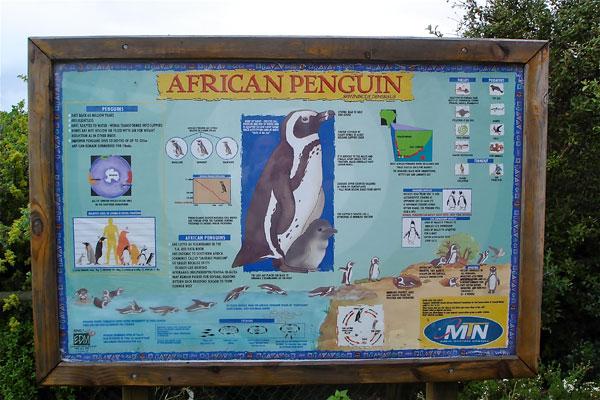
Adult African penguins, Spheniscus demersus, grow to a height of 20 inches (50 centimeters) and weigh between 4 and 8 pounds (2 and 4 kilograms). They have shorter feathers than their Antarctic cousins since they do not live in the extreme cold. These aquatic birds' natural habitat is within the Benguela and western Agulhas ecosystems. [See all 18 penguin species .]
African Jackass Penguin Braying
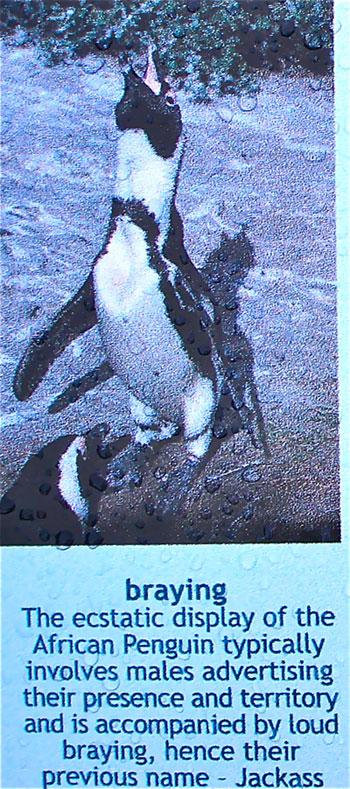
Known also as the "Jackass penguin" because of their donkey-like call, these flightless African birds spend most of their time at sea feeding in the warm South African waters. Male birds tend to be larger than the females and their white bellies and black backs act as natural camouflage from sea predators when they are swimming through the ocean waters near the Cape of Good Hope .
African Penguin Wings

Penguins are extremely ancient birds, probably evolving about the time of the extinction of the dinosaurs, some 65 million years ago. Their average lifespan is 10 to 12 years, but some birds have been known to reach 24 years of age. Their wings have been modified into aquatic flippers that allow them to be exceptional swimmers, feeding to a depth of 115 feet (35 meters), remaining underwater for up to 1.5 minutes. Their black,webbed feet are used solely when they are swimming on the ocean surface.
African Penguin
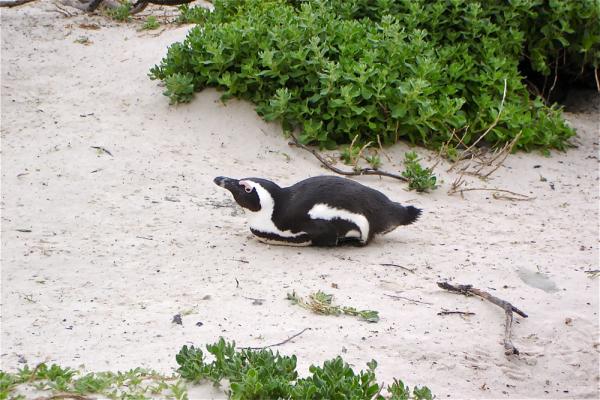
African penguins feed mostly on pelagic fish such as herrings, anchovies, pilchards and horse mackerel. They will eat up to 1 pound (454 grams) of fish each day. When feeding older chicks and just prior to the molting season, their food intake will increase up to 2.2 pounds (1 kg) daily.
African Penguin Nest
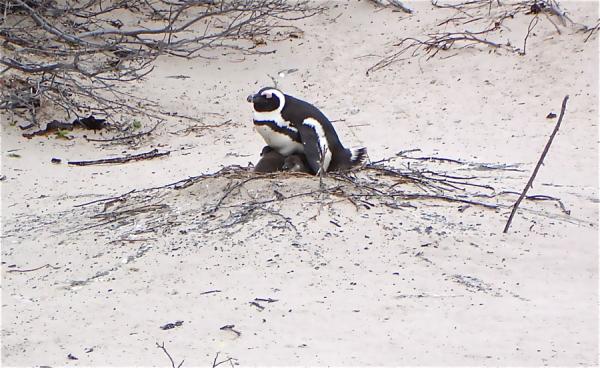
Breeding season for the penguins of Boulders Beach extends from March to May. They are monogamous birds producing one to two eggs each year. The fledging period is from 60 to 130 days. They nest in crude, shallow burrows dug into the sandy beach. Both parents share the duties of nesting and feeding the young.
Get the world’s most fascinating discoveries delivered straight to your inbox.
African Penguin Hatchlings
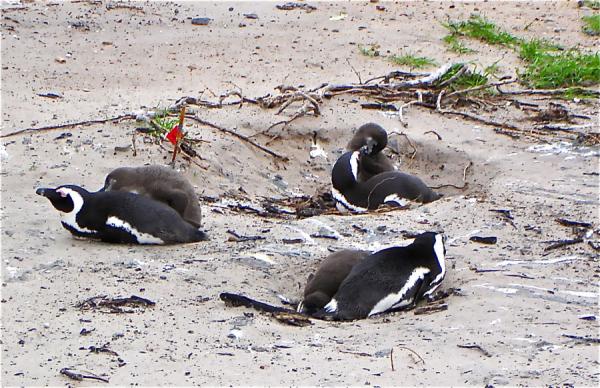
Hatchlings are covered with gray, fluffy feathers that act both as insulation and waterproofing. Parents regurgitate semi-digested fish into their mouths during late afternoon feedings. Young penguins take to the sea for the first time about two months after hatching. This is the most dangerous time for the young aquatic birds with only about half surviving their first open sea adventure.
African Penguins Sign
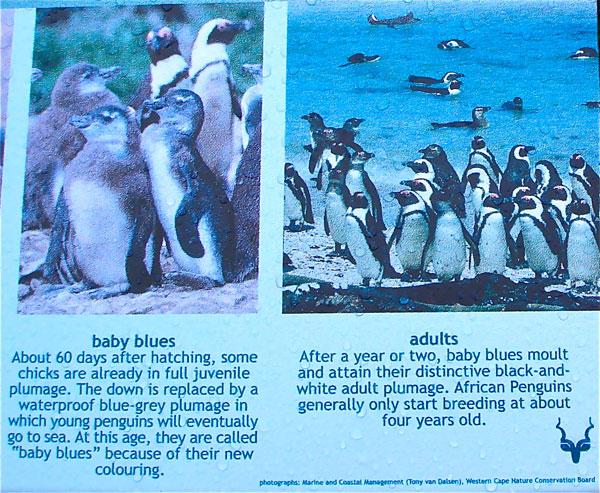
The African penguins of Boulders Beach have become quite a tourist attraction in South Africa . Educational signs line the path of the wooden board walk sharing interesting facts and information about these African natural treasures. But human contact has brought great dangers to the penguin colonies, affecting their nesting environments while seawater pollutants endanger their seafood supplies. Today the African penguin is listed by South Africa as a "vulnerable" species .
African Penguins Colony

Since the early 1900s the African penguin population has been in decline. Conservation groups, such as the Enkosini Penguin Conservation Center and the South African Foundation for the Conservation of Coastal Birds have tirelessly worked to educate the general public and protect the vulnerable penguin habitat.
Today the African penguin colony of Boulders Beach continues to be a healthy avifaunal community where these unique and charming sea birds live out their lives on the rocks and sandy beaches of South Africa with the other amazing animals found on the African continent.
 Live Science Plus
Live Science Plus





